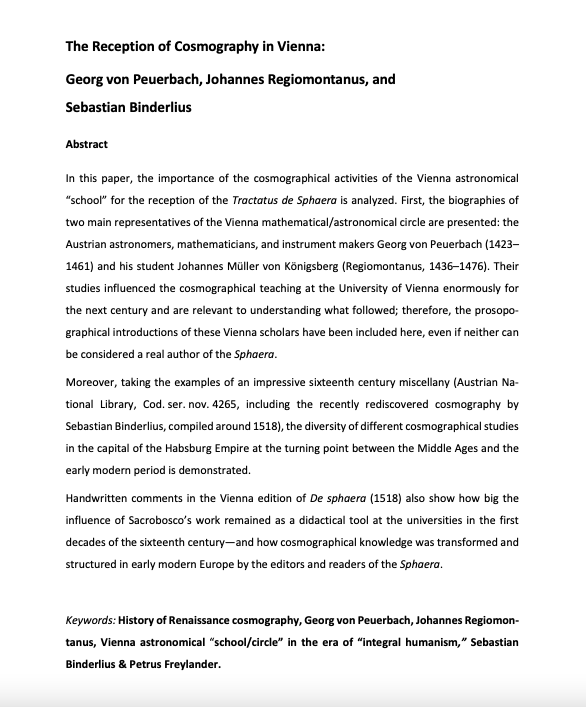The Reception of Cosmography in Vienna: Georg von Peuerbach, Johannes Regiomontanus, and Sebastian Binderlius
- Autoria
- Edição
- Published in the context of the project “The Sphere—Knowledge System Evolution and the Shared Scientific Identity of Europe”
- Ano
- 2019
- PeriĂłdico
Max-Planck-Institut für Wissenschaftsgeschichte

Abstract
In this paper, the importance of the cosmographical activities of the Vienna astronomical “school” for the reception of the Tractatus de Sphaera is analyzed. First, the biographies of two main representatives of the Vienna mathematical/astronomical circle are presented: the Austrian astronomers, mathematicians, and instrument makers Georg von Peuerbach (1423–1461) and his student Johannes Müller von Königsberg (Regiomontanus, 1436–1476). Their studies influenced the cosmographical teaching at the University of Vienna enormously for the next century and are relevant to understanding what followed; therefore, the prosopographical introductions of these Vienna scholars have been included here, even if neither can be considered a real author of the Sphaera. Moreover, taking the examples of an impressive sixteenth-century miscellany (Austrian National Library, Cod. ser. nov. 4265, including the recently rediscovered cosmography by Sebastian Binderlius, compiled around 1518), the diversity of different cosmographical studies in the capital of the Habsburg Empire at the turning point between the Middle Ages and the early modern period is demonstrated. Handwritten comments in the Vienna edition of De sphaera (1518) also show how big the influence of Sacrobosco’s work remained as a didactical tool at the universities in the first decades of the sixteenth century—and how cosmographical knowledge was transformed and structured in early modern Europe by the editors and readers of the Sphaera.